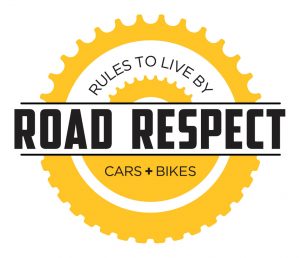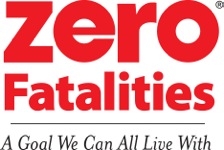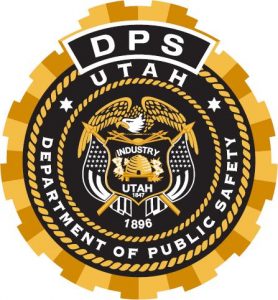Road Respect

OUR MISSION is to promote bicycling and improving safety by educating both drivers and cyclists about the rules of the road and encouraging mutual respect so that everyone gets home safely.
WHAT WE DO is use education and outreach in road cycling events across Utah. OUR AMBASSADORS lead by example in showing Road Respect by sharing the road and obeying laws.
Tips for Cyclists Tips for Drivers Safety Resources Partners
RIDE WITH RESPECT
- Always wear a properly-fitted helmet.
- Ride predictably.
- Increase your visibility with reflective clothing and adequate lighting. (Having reflective on your arms or legs helps motorists identify you as a person)
- Make eye contact with motorists when making a turn so you feel confident that each party is aware of one another.
- Never ride distracted.
- Be respectful of other road users. Courtesy is contagious.
STATE LAWS
- “Bicycle” means a wheeled vehicle propelled by human power by feet or hands acting upon pedals or cranks, with a seat for the operator, and wheels 14 inches or greater in diameter. Bicycle includes an electric assisted bicycle (41-6a-102).
- Your bicycle is considered a vehicle and you have the same rights and are subject to the same provisions as the operator of any other vehicle (41-6a-1102). This includes obeying traffic signals (41-6a-305), stop and yield signs (41-6a-902), and all other official traffic control devices (41-6a-208).
- A bicyclist 16 years and older facing a red signal or red arrow may cautiously enter an intersection as long as they have came to a complete stop, waited 90 seconds or more, and no other vehicle or pedestrian is entitled to have the right-of-way (41-6a-305).
- A bicyclist may pass other vehicles on the right by driving off the roadway (41-6a-705).
- Ride in the same direction as traffic (41-6a-1105).
- Ride as far to the right as practicable except when:
- Passing another bike or vehicle,
- Preparing to turn left,
- Going straight through an intersection past a right-turn-only lane,
- Avoiding unsafe conditions on the right-hand edge of the roadway
- Traveling in a lane too narrow to safely ride side-by-side with another vehicle (41-6a-1105).
- Ride no more than two abreast and then only if you would not impede traffic (41-6a-1105).
- In some instances where an off-roadway bike path has been provided, you may be directed by an official traffic control device to use the path rather than the roadway (41-6a-1105).
- To make a left turn, you have two options as a bicyclist:
- Use the left turn lane or two-way left turn lane in the same manner required of motor vehicles (41-6a-801); or
- Staying on the right side of the roadway, ride through the intersecting roadway to the far corner and stop. After it is safe and legal to do so, cross going in the new direction, continuing to travel on the right side of the roadway (41-6a-1108).
- Always signal your intention to turn right or left, change lanes, or stop at least two seconds before doing so (41-6a-804). You do not have to maintain a continuous signal if you need your hand to control the bike. Once stopped in a designated turn lane you are not required to signal again before turning (41-6a-1109).
- The acceptable hand signals are:
- Left turn – left hand and arm extended horizontally;
- Right turn – left hand and arm extended upward or right hand and arm extended horizontally; and
- Stop or decrease speed – left hand and arm extended downward (41-6a-804).
- Always yield to pedestrians and give an audible signal when overtaking them. Use care and safe speeds to avoid collisions. Never ride where bicycles are prohibited (41-6a-1106).
- Never carry more people on your bike than it was designed and equipped to handle; though, as an adult, you may carry a child securely attached to you in a back pack or sling (41-6a-1103).
- While cycling, never attach yourself or your bike to any vehicles moving on the highway (41-6a-1104).
- Never race bicycles on the highway except in events approved by state or local authorities (41-6a-1111).
- Do not carry any package, bundle, or article that prevents using both hands to control your bike. You must have at least one hand on the handlebars at all times (41-6a-1112).
- You are required to have a white headlight, red taillight or reflector, and side reflectors, all visible for at least 500 feet (41-6a-1114) any time you ride earlier than a half hour before sunrise, later than a half hour after sunset, or whenever it is otherwise difficult to make out vehicles 1000 feet away (41-6a-1603).
- You must have brakes capable of stopping you within 25 feet from a speed of 10 miles per hour on dry, level, clean pavement (41-6a-1113).
- You cannot have a siren or whistle on your bike (41-6a-1113).
- You may park your bike on sidewalk along a roadway anywhere it is not expressly prohibited or where it would impede pedestrian or traffic movement. You may also park your bike on the roadway anywhere parking is allowed as long as you are parked within 12 inches of the curb or edge of roadway (41-6a-1402) and your bike does not block any legally parked motor vehicles. Your bike does not have to be parallel to the curb, but may be parked at any angle to the curb (41-6a-1107).
- A peace officer may at any time upon reasonable cause to believe that your bicycle is unsafe or not equipped as required by law, or that its equipment is not in proper adjustment or repair, require you to stop and submit the bicycle to an inspection and a test as appropriate (41-6a-1110).
DRIVE WITH RESPECT
- Watch for bicycles in traffic; they are smaller and harder to see.
- It is easy to misjudge a cyclist’s speed, so wait it out.
- Be patient when driving around cyclists.
- Focus on driving and the road.
- Take caution of oncoming traffic when giving cyclists room as you pass them.
- Slow down around cyclists.
- Be respectful of other road users. Courtesy is contagious.
STATE LAWS:
- Motorists may not pass within 3-feet of a moving bicycle (41-6a-706.5).
- Motorists may not attempt to distract a bicyclist for the purpose of causing injury or force a bicyclist off the roadway (41-6a-706.5).
- Motorists may cross the centerline (41-6a-701) or the center two-way left turn lane (41-6a-710) to pass a bicycle if it can be done safely.
- When traveling in a merging lane, yield the right-of-way to all vehicles (including bicycles) traveling in the continuing lane (41-6a-903).
- When turning left, yield to any vehicle (including bicycles) approaching from the opposite direction (41-6a-903).
- When turning right, yield to any vehicle (including bicycles) in the intersection or adjacent crosswalk (41-6a-305).
- Don’t drive under the influence of alcohol and/or drugs (41-6a-502).
- Don’t follow any vehicle (including a bicycle) too closely (41-6a-711).
- Don’t drive carelessly or distracted (41-6a-1715) including not texting or emailing while driving (41-6a-1716).
- Always signal your intention to turn right or left, change lanes, or stop at least two seconds before doing so (41-6a-804). A person may not stop or suddenly decrease the speed of a vehicle without first giving an appropriate signal to the operator of any vehicle immediately to the rear when there is opportunity to give a signal (41-6a-804).
- Motorists may not drive when their front or side view is obstructed (41-6a-1705).
- Know that cyclists are required to ride as far to the right as practicable, though they are allowed to occupy the lane when:
- Passing another bike or vehicle,
- Preparing to turn left,
- Going straight through an intersection past a right-turn-only lane,
- Avoiding unsafe conditions on the right-hand edge of the roadway
- Traveling in a lane too narrow to safely ride side-by-side with another vehicle (41-6a-1105).
SAFETY RESOURCES
Move Utah is dedicated to providing local governments and municipalities across Utah with technical support and guidance as they pursue their active transportation planning efforts.
The Utah State Legislature lists the Traffic Code for motor vehicles in Utah, which includes bicycles. The following link lists the laws by title and has a keyword search function.
The Utah Department of Health provides bicycle safety links and resources. Resources include educational videos, materials, proper helmet use and turning signals, tips for safely driving in traffic and a motorist & cyclist guide for sharing the road available in English and Spanish.
The League of American Bicyclists gives tips on how cyclists and motorists can safely share the road.
The Salt Lake City Police Department offers information about cycling and driving safety, including a downloadable Road Guide for cyclists and motorists, a printable card of the most common laws regarding bicycles in SLC, commuter guidelines and links to bicycle route maps for the Salt Lake area.
“Dear Motorist” video promoting safe driving and adherence to bicycle laws.
Share the Road campaign video.
Bike SLC offers useful information regarding bicycle safety and basics, route and event information, as well as laws and advocacy for riders in the Salt Lake area.
PARTNERS




